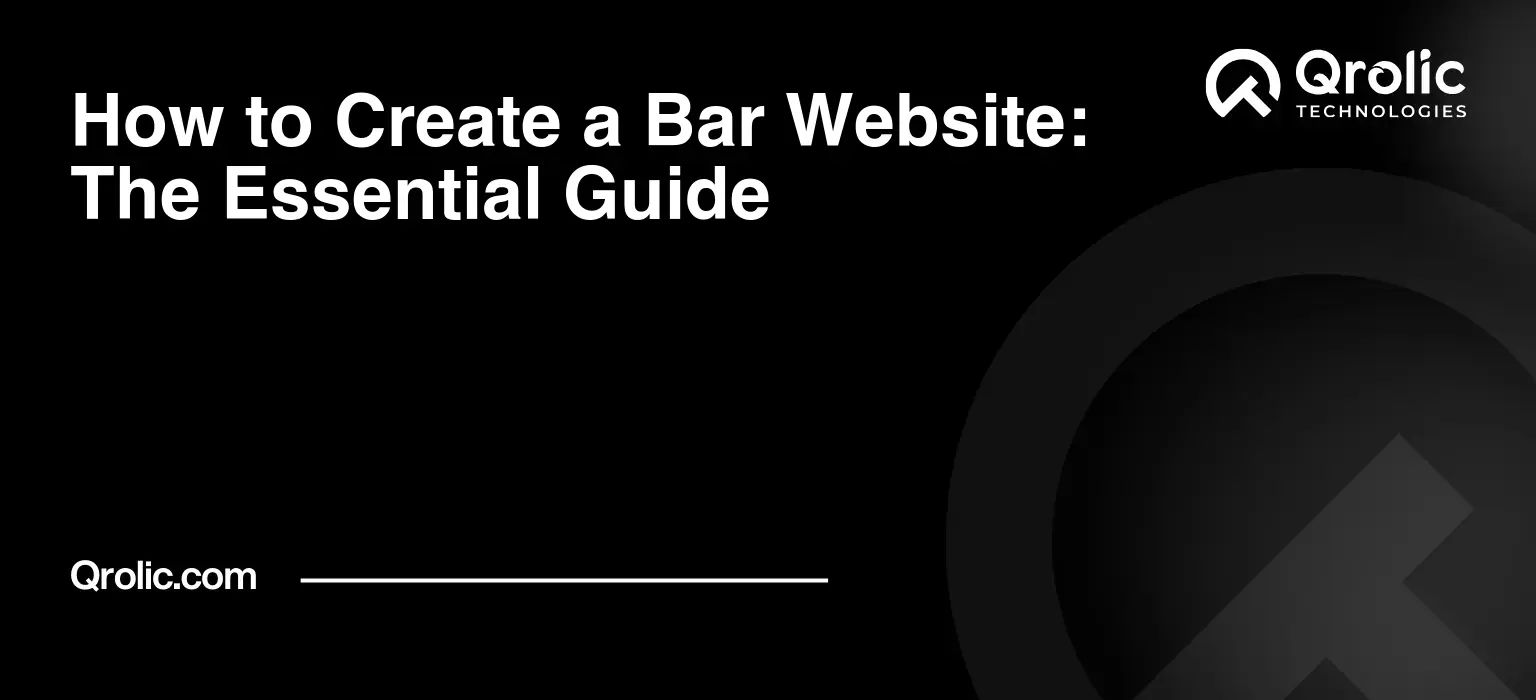Quick Summary:
- A website expands reach, engages customers, and boosts sales.
- Design an easy-to-use site with great visuals.
- Include online ordering, reservations, and social media links.
- Promote, optimize, and keep your website updated.
Table of Contents
- Why Your Bar Needs a Website: More Than Just a Digital Menu
- Reaching a Wider Audience: Breaking Geographical Barriers
- Building Your Brand Identity: Showcasing Your Unique Vibe
- Improving Customer Engagement: Fostering Loyalty
- Providing Essential Information: Answering Key Questions
- Boosting Sales and Revenue: Driving Direct Business
- Defining Your Bar Website’s Purpose and Goals: What Do You Want to Achieve?
- Identify Your Target Audience: Who Are You Trying to Reach?
- Set Measurable Objectives: Defining Success
- Determine Key Performance Indicators (KPIs): Tracking Your Progress
- Choosing the Right Domain Name and Hosting: Setting the Foundation
- Selecting a Memorable and Relevant Domain Name: First Impressions Matter
- Finding Reliable Hosting: Ensuring Website Performance
- Designing Your Bar Website: Creating an Immersive Experience
- Prioritizing User Experience (UX): Making it Easy to Navigate
- Showcasing High-Quality Visuals: Enticing the Senses
- Incorporating Your Brand Identity: Reinforcing Your Unique Vibe
- Essential Pages for Your Bar Website: What to Include
- Homepage: Making a Strong First Impression
- Menu Page: Showcasing Your Culinary Creations
- About Us Page: Telling Your Story
- Contact Page: Making it Easy to Reach You
- Location/Map Page: Helping Customers Find You
- Events Page: Promoting Upcoming Happenings
- Content Creation: Crafting Engaging and Informative Copy
- Writing Compelling Copy: Engaging Your Audience
- Optimizing for Search Engines (SEO): Making it Easy to Find
- Regular Updates and Fresh Content: Keeping it Relevant
- Online Ordering and Reservations: Streamlining the Customer Experience
- Implementing Online Ordering: Catering to Takeout and Delivery
- Integrating Reservation Systems: Managing Bookings Efficiently
- Social Media Integration: Amplifying Your Reach
- Linking to Your Social Media Profiles: Connecting with Your Audience
- Embedding Social Media Feeds: Showcasing Your Activity
- Encouraging Social Sharing: Amplifying Your Content
- Website Security: Protecting Your Data and Customers
- Implementing SSL Certificates: Securing Your Website
- Using Strong Passwords and Keeping Software Updated: Preventing Breaches
- Implementing Firewalls and Malware Protection: Blocking Threats
- Testing and Optimization: Ensuring Peak Performance
- Testing Website Functionality: Ensuring Everything Works
- Monitoring Website Analytics: Tracking Your Progress
- A/B Testing: Optimizing for Conversions
- Promoting Your Bar Website: Driving Traffic and Visibility
- Search Engine Optimization (SEO): Getting Found Online
- Social Media Marketing: Engaging Your Audience
- Email Marketing: Nurturing Your Customer Base
- Local Listings: Getting Listed in Online Directories
- Qrolic Technologies: Your Partner in Digital Success
- Conclusion: Your Bar Website – A Vital Investment
Why Your Bar Needs a Website: More Than Just a Digital Menu
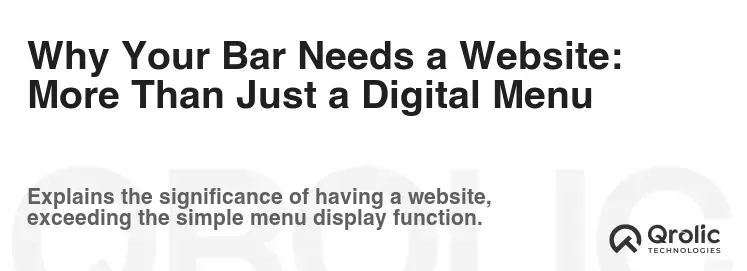
Running a successful bar in today’s competitive landscape demands more than just a great drink selection and a lively atmosphere. You need a strong online presence, and that starts with a compelling website. Think of your website as your 24/7 digital bartender, tirelessly promoting your establishment, attracting new customers, and keeping regulars informed. But why is a website so crucial? Let’s dive into the compelling reasons.
Reaching a Wider Audience: Breaking Geographical Barriers
Imagine being limited to customers who physically walk past your door. A website shatters those limitations. It opens your doors to potential patrons searching online for “bars near me,” “best happy hour deals in [city],” or even specific cocktails. A well-optimized website, targeting relevant keywords, ensures your bar appears in these searches, exponentially expanding your reach.
Building Your Brand Identity: Showcasing Your Unique Vibe
Your website is your opportunity to tell your story. It’s the canvas where you paint a vivid picture of your bar’s atmosphere, personality, and unique selling points. Are you a sophisticated cocktail lounge with a refined ambiance? A lively sports bar with wall-to-wall screens? A cozy neighborhood pub with a focus on craft beers? Your website is where you showcase these elements through captivating visuals, engaging content, and a design that reflects your brand identity.
Improving Customer Engagement: Fostering Loyalty
A website isn’t just a static brochure; it’s a dynamic tool for engaging with your customers. You can use it to announce upcoming events like live music performances, trivia nights, or themed parties. Share mouthwatering photos of your food and drinks. Offer online reservations or ordering options. Collect email addresses to build a mailing list for exclusive promotions and announcements. By providing valuable and engaging content, you keep your customers coming back for more.
Providing Essential Information: Answering Key Questions
Before visiting your bar, potential customers have questions. What are your hours? Where are you located? What’s on your menu? What’s the dress code? Your website provides a centralized and easily accessible source of information, answering these queries and removing any friction in the decision-making process. A clear and informative website builds trust and encourages visits.
Boosting Sales and Revenue: Driving Direct Business
Ultimately, your website is a tool for driving sales and increasing revenue. By showcasing your offerings, promoting specials, and making it easy for customers to find you, you’re directly influencing their purchasing decisions. Online ordering options, gift card sales, and event ticket purchases further contribute to your bottom line. A well-designed website is an investment that pays for itself through increased business.
Defining Your Bar Website’s Purpose and Goals: What Do You Want to Achieve?

Before you start thinking about design and content, it’s crucial to define the purpose and goals of your bar website. What do you want it to achieve? What specific outcomes are you hoping to see? A clear understanding of your objectives will guide your website’s development and ensure it’s aligned with your overall business strategy.
Identify Your Target Audience: Who Are You Trying to Reach?
Understanding your target audience is fundamental to creating a website that resonates with them. Are you targeting young professionals, students, tourists, or a specific demographic group? Consider their interests, online behavior, and preferences when designing your website’s look, feel, and content. For example, a website targeting college students might feature vibrant colors, social media integration, and promotions geared towards their budget, while a website targeting a more mature audience might opt for a more sophisticated design and focus on premium offerings.
Set Measurable Objectives: Defining Success
Vague goals like “increase brand awareness” are difficult to measure. Instead, set specific, measurable, achievable, relevant, and time-bound (SMART) objectives. Here are some examples:
- Increase Website Traffic by 20% within the next quarter. This can be measured using website analytics tools.
- Generate 50 online reservations per week within the next month. Track reservations through your online booking system.
- Grow email list by 100 subscribers per month. Monitor email signup rates.
- Increase online gift card sales by 15% within the next six months. Track gift card sales through your e-commerce platform.
Determine Key Performance Indicators (KPIs): Tracking Your Progress
KPIs are the metrics you’ll use to track your progress towards your objectives. Examples include:
- Website traffic: The number of visitors to your website.
- Bounce rate: The percentage of visitors who leave your website after viewing only one page.
- Conversion rate: The percentage of visitors who complete a desired action, such as making a reservation or signing up for your email list.
- Time on site: The average amount of time visitors spend on your website.
- Social media engagement: The number of likes, shares, and comments on your social media posts.
By regularly monitoring these KPIs, you can identify areas where your website is performing well and areas that need improvement.
Choosing the Right Domain Name and Hosting: Setting the Foundation

Your domain name and hosting are the foundation of your website. Choose them wisely, as they will impact your brand identity, search engine ranking, and website performance.
Selecting a Memorable and Relevant Domain Name: First Impressions Matter
Your domain name is your website’s address on the internet. It should be memorable, easy to spell, and relevant to your bar’s name and brand. Consider these tips:
- Keep it short and simple: Avoid long, complicated domain names that are difficult to remember and type.
- Use keywords: Incorporate relevant keywords that people might use when searching for your bar, such as “[city] bar,” “craft beer,” or “live music.”
- Choose the right extension: The most common extension is “.com,” but consider using “.bar” or “.pub” for a more industry-specific option.
- Check for availability: Use a domain name registrar like GoDaddy or Namecheap to check if your desired domain name is available.
Finding Reliable Hosting: Ensuring Website Performance
Your hosting provider stores your website’s files and makes them accessible to visitors. Choose a reliable hosting provider that offers:
- Uptime guarantee: Look for a provider with an uptime guarantee of at least 99.9%, ensuring your website is always available.
- Fast loading speeds: A slow-loading website can frustrate visitors and negatively impact your search engine ranking.
- Scalability: Choose a hosting plan that can accommodate your website’s growing traffic and storage needs.
- Security features: Ensure your hosting provider offers security features like SSL certificates, firewalls, and malware protection.
- Customer support: Choose a provider with responsive and helpful customer support in case you encounter any issues.
Designing Your Bar Website: Creating an Immersive Experience

Your website’s design is crucial for creating a positive first impression and engaging visitors. It should be visually appealing, easy to navigate, and reflective of your bar’s brand identity.
Prioritizing User Experience (UX): Making it Easy to Navigate
UX is all about making your website easy and enjoyable to use. Consider these UX principles:
- Intuitive navigation: Create a clear and logical navigation menu that allows visitors to easily find the information they’re looking for.
- Mobile-friendliness: Ensure your website is responsive and looks great on all devices, including smartphones and tablets. Mobile optimization is crucial, as many people will be searching for bars on their phones.
- Clear call-to-actions: Use prominent call-to-action buttons to guide visitors towards desired actions, such as making a reservation or viewing the menu.
- Fast loading speeds: Optimize your website’s images and code to ensure it loads quickly.
- Accessibility: Make your website accessible to people with disabilities by following accessibility guidelines.
Showcasing High-Quality Visuals: Enticing the Senses
Visuals are essential for showcasing your bar’s atmosphere, food, and drinks. Use high-quality photos and videos that are:
- Well-lit and professionally shot: Invest in professional photography to capture the best possible images of your bar.
- Appealing and enticing: Choose visuals that showcase your offerings in the most appealing way possible.
- Optimized for the web: Compress images to reduce file size and improve loading speeds.
Incorporating Your Brand Identity: Reinforcing Your Unique Vibe
Your website’s design should reflect your bar’s brand identity, including your logo, color scheme, typography, and overall aesthetic. Consistency across all your marketing materials will help reinforce your brand and create a memorable impression.
- Use your logo prominently: Place your logo in a prominent location on your website, such as the header.
- Stick to your brand colors: Use your brand colors consistently throughout your website’s design.
- Choose appropriate typography: Select fonts that are readable and reflect your brand’s personality.
Essential Pages for Your Bar Website: What to Include
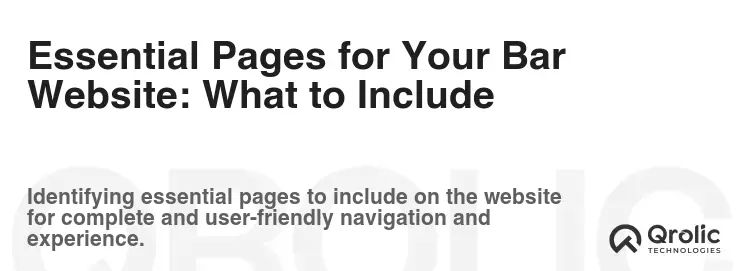
Every bar website should include certain essential pages to provide visitors with the information they need.
Homepage: Making a Strong First Impression
Your homepage is the first page visitors will see, so it’s crucial to make a strong impression. Include:
- A captivating headline and tagline: Clearly communicate your bar’s unique selling proposition.
- High-quality visuals: Showcase your bar’s atmosphere and offerings with stunning photos and videos.
- A brief overview of your bar: Highlight your key features and amenities.
- Clear call-to-actions: Guide visitors towards desired actions, such as viewing the menu or making a reservation.
Menu Page: Showcasing Your Culinary Creations
Your menu page is one of the most important pages on your website. Include:
- A clear and organized menu: Categorize your food and drinks for easy navigation.
- Detailed descriptions of each item: Highlight the ingredients and flavors of each dish and drink.
- High-quality photos of your food and drinks: Entice visitors with mouthwatering visuals.
- Pricing information: Be transparent about your prices.
- Dietary information: Indicate whether items are vegetarian, vegan, or gluten-free.
About Us Page: Telling Your Story
Your About Us page is your opportunity to connect with visitors on a personal level and tell your bar’s story. Include:
- Your bar’s history and mission: Share your bar’s origins and what you stand for.
- Information about your staff: Introduce your bartenders, chefs, and other team members.
- Photos of your staff: Show the faces behind your bar.
- Customer testimonials: Share positive feedback from your satisfied customers.
Contact Page: Making it Easy to Reach You
Your Contact page should make it easy for visitors to reach you with questions, reservations, or feedback. Include:
- Your bar’s address: Provide your full address and a map.
- Your phone number: List your phone number for easy calling.
- Your email address: Provide your email address for written inquiries.
- A contact form: Allow visitors to send you messages directly from your website.
- Your social media links: Link to your bar’s social media profiles.
Location/Map Page: Helping Customers Find You
A dedicated location page with an embedded map is crucial for helping customers find your bar. Make sure the map is interactive and allows users to get directions. Consider adding nearby landmarks or points of interest to give customers a better sense of your bar’s location within the city. Include details like parking information and public transportation options to further assist them in planning their visit.
Events Page: Promoting Upcoming Happenings
Highlight any special events or promotions that you have. Consider a calendar to keep it fresh.
Content Creation: Crafting Engaging and Informative Copy

Your website’s content is crucial for attracting visitors, engaging them with your brand, and driving them to take action. It should be well-written, informative, and optimized for search engines.
Writing Compelling Copy: Engaging Your Audience
- Use a clear and concise writing style: Avoid jargon and technical terms that your audience might not understand.
- Focus on the benefits of visiting your bar: Highlight what makes your bar unique and why people should choose it over the competition.
- Use strong verbs and active voice: Make your writing more engaging and persuasive.
- Tell stories: Share anecdotes and stories that bring your bar’s personality to life.
- Use humor: If appropriate, inject humor into your writing to make it more engaging.
Optimizing for Search Engines (SEO): Making it Easy to Find
SEO is the process of optimizing your website to rank higher in search engine results. This involves:
- Keyword research: Identify the keywords that people are using to search for bars like yours. Use tools like Google Keyword Planner and Ahrefs to find relevant keywords.
- On-page optimization: Optimize your website’s content and code to include your target keywords. This includes:
- Title tags: Write compelling title tags that include your target keywords.
- Meta descriptions: Write concise meta descriptions that summarize the content of each page.
- Header tags: Use header tags (H1, H2, H3) to structure your content and highlight your target keywords.
- Image alt tags: Add alt tags to your images that describe the image and include your target keywords.
- Internal linking: Link to other relevant pages on your website.
- Off-page optimization: Build backlinks to your website from other reputable websites. This helps to improve your website’s authority and ranking.
Regular Updates and Fresh Content: Keeping it Relevant
Keep your website fresh and engaging by regularly updating your content. This can include:
- Updating the menu with seasonal specials: Highlight new dishes and drinks based on the current season.
- Announcing upcoming events and promotions: Keep your audience informed about what’s happening at your bar.
- Sharing blog posts about relevant topics: Create blog content related to cocktails, food, nightlife, or local events.
- Adding new photos and videos: Keep your website visually appealing with fresh content.
Online Ordering and Reservations: Streamlining the Customer Experience
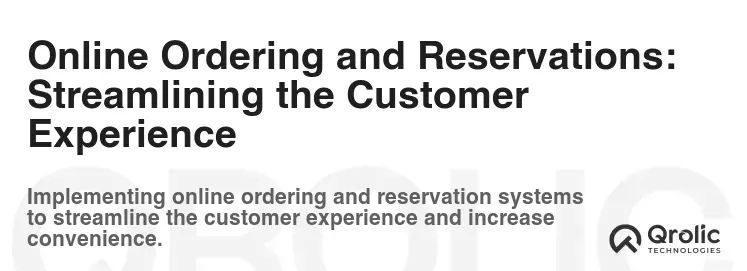
Integrating online ordering and reservation systems into your bar website can significantly enhance the customer experience and boost your revenue.
Implementing Online Ordering: Catering to Takeout and Delivery
If your bar offers takeout or delivery, online ordering is a must-have.
- Choose a reliable platform: Select an online ordering platform that integrates seamlessly with your website and point-of-sale (POS) system. Popular options include Toast, Square Online, and ChowNow.
- Showcase your menu with high-quality images: Entice customers with mouthwatering visuals of your food and drinks.
- Offer customization options: Allow customers to customize their orders with specific ingredients and preferences.
- Provide secure payment processing: Ensure secure payment processing to protect customer data.
- Offer delivery and pickup options: Give customers the flexibility to choose their preferred method of receiving their order.
Integrating Reservation Systems: Managing Bookings Efficiently
Online reservation systems streamline the booking process for both you and your customers.
- Choose a reputable platform: Select a reservation platform that integrates with your website and provides features like table management, email confirmations, and customer data collection. Popular options include OpenTable, Resy, and Tock.
- Offer different reservation options: Allow customers to book tables, private rooms, or specific areas of your bar.
- Set capacity limits: Manage your bar’s capacity by setting limits on the number of reservations you accept.
- Send automated reminders: Reduce no-shows by sending automated reservation reminders to customers.
Social Media Integration: Amplifying Your Reach
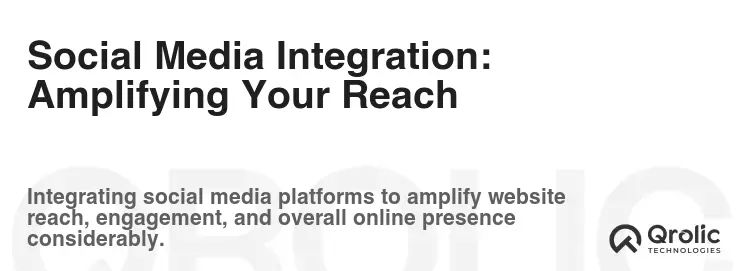
Integrating your bar’s website with social media platforms is essential for expanding your reach, engaging with your audience, and driving traffic to your website.
Linking to Your Social Media Profiles: Connecting with Your Audience
Make it easy for visitors to find and follow your bar on social media by:
- Displaying social media icons prominently: Place social media icons in your website’s header, footer, or sidebar.
- Linking to your profiles in your contact information: Include links to your social media profiles on your Contact page.
Embedding Social Media Feeds: Showcasing Your Activity
Embed your social media feeds on your website to showcase your latest posts, photos, and videos. This keeps your website fresh and engaging and encourages visitors to follow you on social media.
Encouraging Social Sharing: Amplifying Your Content
Make it easy for visitors to share your website’s content on social media by:
- Adding social sharing buttons to your blog posts and pages: Allow visitors to share your content with their friends and followers with a single click.
- Using hashtags: Incorporate relevant hashtags in your website’s content and social media posts.
Website Security: Protecting Your Data and Customers
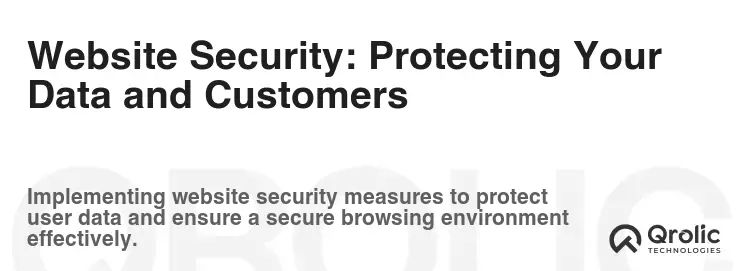
Website security is paramount for protecting your bar’s data, customer information, and reputation.
Implementing SSL Certificates: Securing Your Website
An SSL certificate encrypts the data transmitted between your website and visitors’ browsers, protecting sensitive information like passwords and credit card details. Ensure your website has an active SSL certificate, which is indicated by a padlock icon in the address bar.
Using Strong Passwords and Keeping Software Updated: Preventing Breaches
Use strong, unique passwords for all your website accounts and regularly update your website’s software, including your content management system (CMS), plugins, and themes, to patch security vulnerabilities.
Implementing Firewalls and Malware Protection: Blocking Threats
Implement a firewall to block malicious traffic and malware protection to scan your website for threats and remove them.
Testing and Optimization: Ensuring Peak Performance
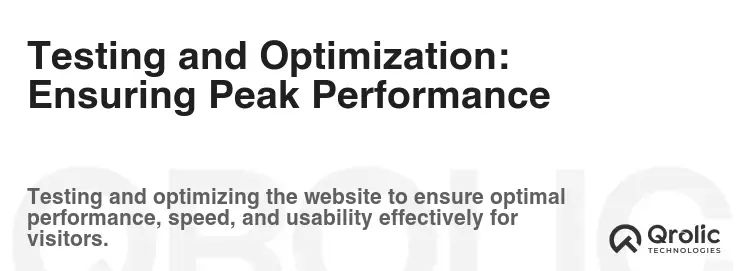
Once your bar website is live, it’s crucial to continuously test and optimize it to ensure it’s performing at its best.
Testing Website Functionality: Ensuring Everything Works
Thoroughly test all aspects of your website to ensure everything is working correctly, including:
- Navigation: Verify that all links are working and that visitors can easily navigate your website.
- Forms: Test all forms to ensure they are submitting data correctly.
- Online ordering and reservation systems: Ensure these systems are functioning properly and that customers can place orders and make reservations without any issues.
- Mobile responsiveness: Test your website on different devices and screen sizes to ensure it’s responsive and looks great on all platforms.
Monitoring Website Analytics: Tracking Your Progress
Monitor your website analytics to track your progress towards your objectives and identify areas for improvement. Use tools like Google Analytics to track:
- Website traffic: The number of visitors to your website.
- Bounce rate: The percentage of visitors who leave your website after viewing only one page.
- Conversion rate: The percentage of visitors who complete a desired action, such as making a reservation or signing up for your email list.
- Time on site: The average amount of time visitors spend on your website.
- Popular pages: The pages on your website that are most visited.
A/B Testing: Optimizing for Conversions
Use A/B testing to experiment with different website elements and identify what works best for your audience. This involves creating two versions of a page or element and testing them against each other to see which performs better. For example, you could A/B test different headlines, call-to-action buttons, or images.
Promoting Your Bar Website: Driving Traffic and Visibility
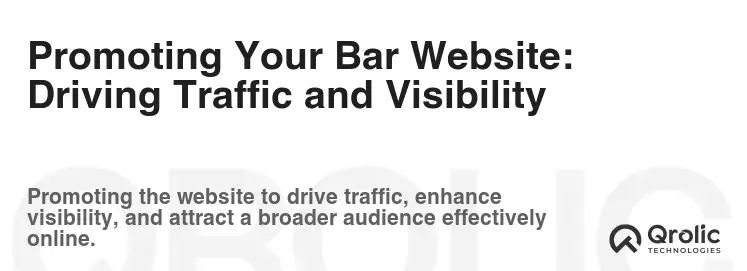
Creating a fantastic bar website is only half the battle. You need to actively promote it to drive traffic and increase its visibility.
Search Engine Optimization (SEO): Getting Found Online
Continue to optimize your website for search engines by:
- Conducting keyword research: Identify relevant keywords that people are using to search for bars like yours.
- Optimizing your website’s content: Incorporate your target keywords into your website’s content, including your title tags, meta descriptions, header tags, and image alt tags.
- Building backlinks: Build backlinks to your website from other reputable websites.
Social Media Marketing: Engaging Your Audience
Promote your website on social media by:
- Sharing links to your website’s pages and blog posts: Regularly share your website’s content on your social media profiles.
- Running social media ads: Target your social media ads to reach potential customers in your area.
- Engaging with your followers: Respond to comments and messages and participate in relevant conversations.
Email Marketing: Nurturing Your Customer Base
Build an email list and send regular newsletters to your subscribers, promoting your website, upcoming events, and special offers.
Local Listings: Getting Listed in Online Directories
Claim your bar’s listings on online directories like Google My Business, Yelp, and TripAdvisor. This will help people find your bar when they are searching online for local businesses.
Qrolic Technologies: Your Partner in Digital Success

At Qrolic Technologies (https://qrolic.com/), we understand the challenges of building and maintaining a successful online presence. We offer a comprehensive suite of digital marketing services tailored to the unique needs of bars and restaurants, including:
- Website design and development: We create visually appealing, user-friendly, and SEO-optimized websites that reflect your brand identity and drive results.
- Search engine optimization (SEO): We help you rank higher in search engine results, driving more traffic to your website and increasing your visibility.
- Social media marketing: We manage your social media accounts, creating engaging content and running targeted ads to reach your target audience.
- Email marketing: We help you build an email list and send effective email campaigns that promote your bar and drive sales.
Let Qrolic Technologies be your partner in digital success. Contact us today to learn more about how we can help you grow your business online.
Conclusion: Your Bar Website – A Vital Investment

Creating a bar website is no longer optional; it’s a vital investment for any establishment looking to thrive in today’s digital age. By following this essential guide, you can create a website that not only showcases your bar’s unique personality and offerings but also attracts new customers, engages existing ones, and ultimately boosts your bottom line. Remember to focus on user experience, high-quality visuals, compelling content, and ongoing optimization to ensure your website remains a valuable asset for your business. And when you need expert assistance, Qrolic Technologies is here to help you achieve your digital marketing goals. Cheers to your online success!
